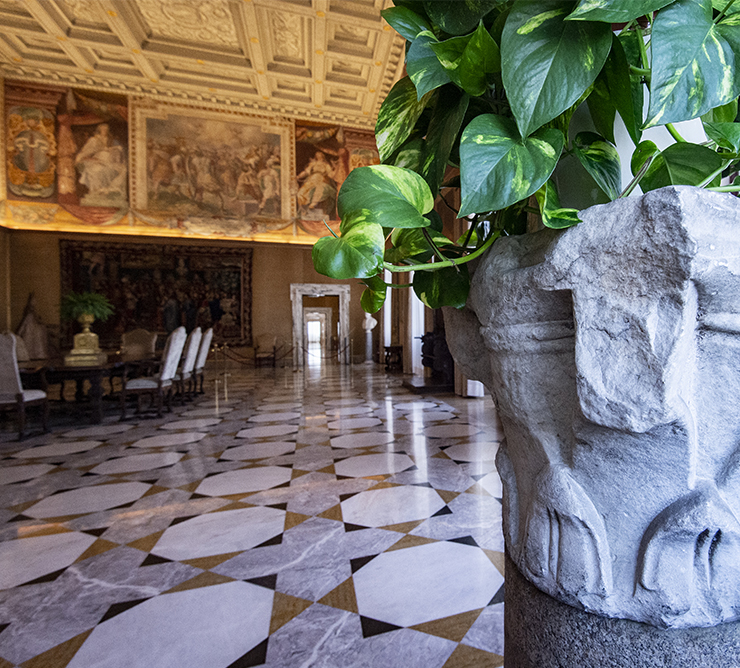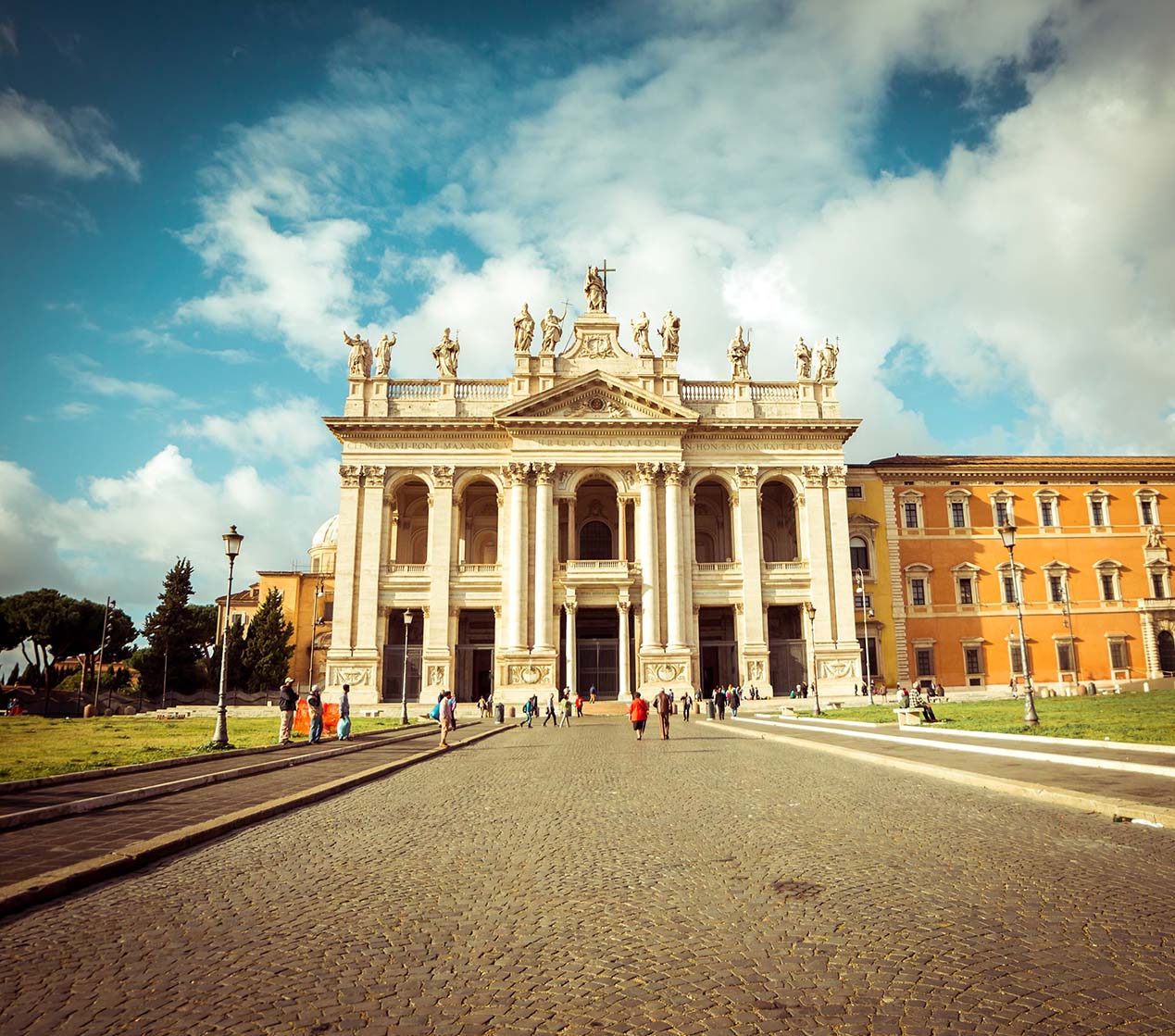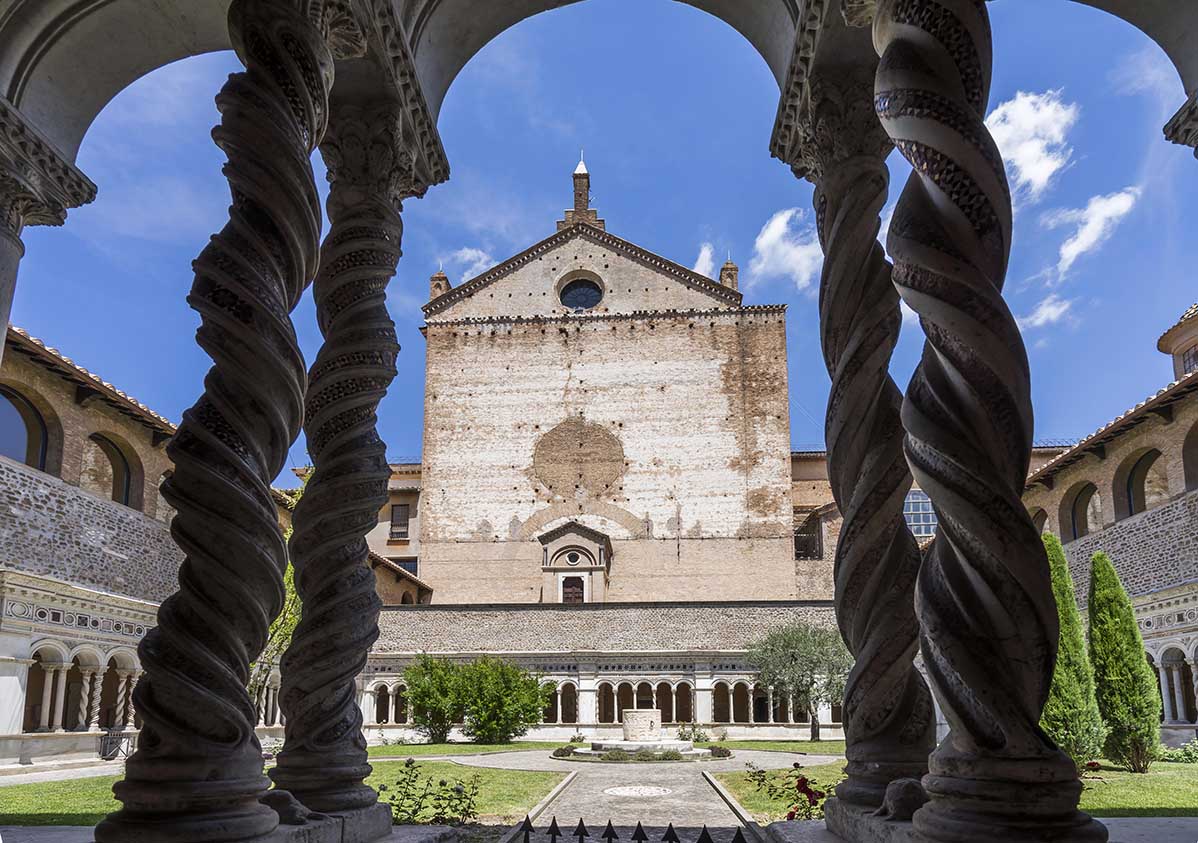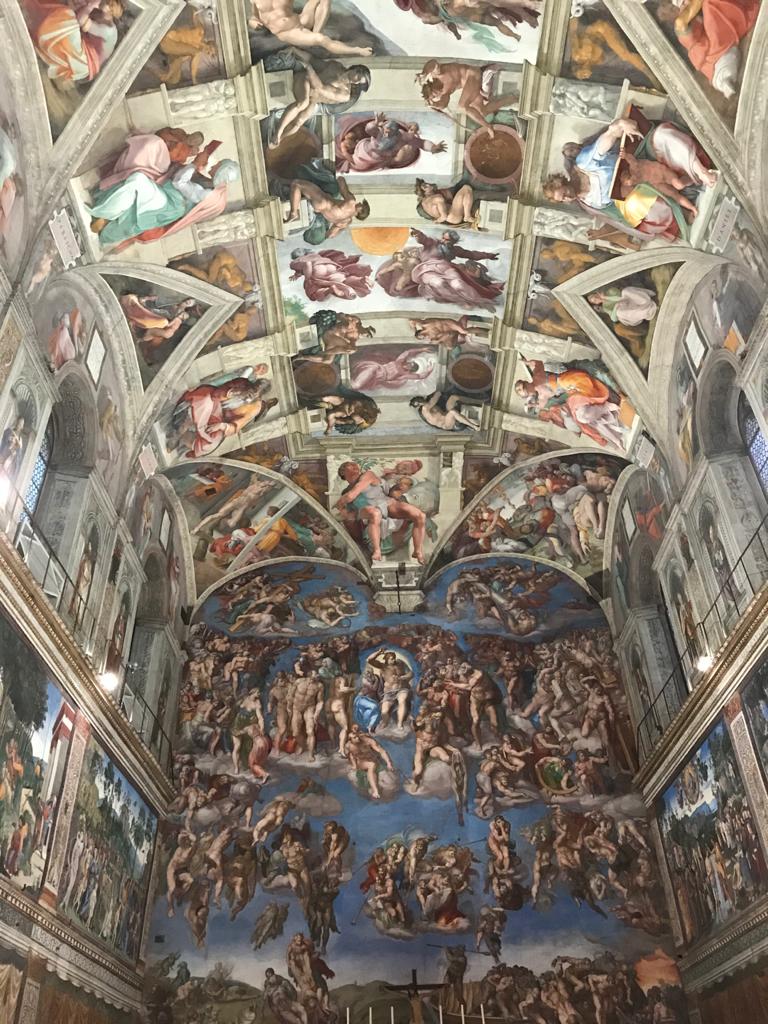Daily guided tour of Rome, from the Lateran Complex to the Vatican Museums.
A one day guided tour that will lead you through two symbols of Rome and Christianity, rich of history and profound meaning, such as the Lateran Complex and the Vatican Museums. Unique symbols of the religious, historical and artistic heritage of the Eternal City that ideally retrace the steps of the processional route that, after the election of the new Pope, used to move from Saint Peter's Basilica to Saint John Lateran, the Cathedral of Rome, to take possession of the chair of Bishop of Rome.
A one-day tour that will leave a deep mark in your heart.
Available languages: Italian and English
Accompanied by an official guide, the tour begins at the Lateran Apostolic Palace, built by Pope Sixtus V Peretti at the end of 1500 on the area of the ancient Patriarchate that for a thousand years, from the fourth century, has been the main residence of the Popes and of the Papal Court. Through the beautiful staircase of the Lateran Palace we enter the adjacent Saint John Lateran Basilica, one of the most important churches of Christianity: the first Christian church in the West, built after the Edict of Constantine in 313 A.D., and therefore considered the "mother and head of all churches in Rome and in the world". The visit ends in the Cloister, located on the left side of the basilica, a fine example of medieval Roman art: once place of prayer and meditation for the clergy of the Basilica, it offers moments of great peace and recollection to visitors and pilgrims.
After visiting the basilica and the cloister, we will take a seat on a Vatican&Rome Open Bus and comfortably reach the Vatican Museums. Founded in 1506 by Pope Julius II, the Vatican Museums host a vast collection of works of art gathered by the Popes over the centuries ranging from classical antiquity to the Renaissance, up to contemporary art. The countless sections of the museums, such as the Pinacoteca, the Museo Pio Clementino, the Gallery of Maps, the Raphael Rooms and many others are home to a vast collection of masterpieces that prepare us to the authentic heart of this museum complex: the Sistine Chapel.
THE MEETING POINT FOR THE GUIDED TOUR IS AT THE ENTRANCE OF THE LATERAN PALACE LOCATED TO THE RIGHT OF THE MAIN FACADE OF THE SAINT JOHN LATERAN BASILICA AT LEAST 15 MINUTES BEFORE THE RESERVED TIME.
***
IMPORTANT: The guided tour does not include entry to St. Peter's Basilica. However, our expert guide will accompany you to discover its fascinating history from the outside, revealing curiosities and details about this extraordinary symbol of Christianity. At the end of the pilgrimage, you will still have the opportunity to freely access the Basilica directly from St. Peter's Square, following the signs for the entrance. A unique opportunity to cross the Holy Door on the occasion of the Holy Year of Hope.
Some information for you:
Opening hours of St. Peter's Basilica
 Summer period (April 1 - September 30): 7:00 a.m - 7:10 p.m.
Summer period (April 1 - September 30): 7:00 a.m - 7:10 p.m.
 Winter period (October 1 - March 31): 7:00 a.m. - 7:10 p.m.
Winter period (October 1 - March 31): 7:00 a.m. - 7:10 p.m.
 For more information on the Jubilee, visit the official website:
For more information on the Jubilee, visit the official website:

The Lateran Apostolic Palace was built by Pope Sixtus V Peretti at the end of 1500 on the area of the ancient Patriarchate that, for a thousand years, from the fourth century, has been the main residence of the Pope and the Papal Court. A true sacred citadel, built next to the Basilica, dedicated to the Blessed Saviour and to Saints John the Baptist and Evangelist, today known as the Basilica of St. John Lateran. The Palace represents the ideal of Renaissance beauty that inspired the activity of a great Pontiff like Sixtus V, here and throughout Rome, during his papacy.
It houses several rooms of great historical and artistic importance, frescoed with abundance of details and rich in paintings and precious tapestries, such as the Hall of Glory, the Hall of Constantine, the Hall of the Popes and the Conciliation Hall, also known for the historic event of the signing of the Lateran Pacts between the Holy See and the Kingdom of Italy in 1929.
hide
Saint John Lateran Basilica was the first Christian church in the West built after the Edict of Constantine in 313 AD, and for this reason considered "mother and head of all churches in Rome and in the world". It is, in fact, the Cathedral of Rome and see of its Bishop, the Pontiff. A masterpiece of art and architecture, reimagined over the centuries by great architects such as Borromini and Galileo.
In the central nave we are welcomed by the wonderful large statues of the 12 apostles, witnesses to the apostolic succession of the Catholic Church. The beautiful Gothic canopy placed above the main altar protects two precious silver busts that guard the relics of Saint Peter and Saint Paul. In the apse we will admire the great mosaic of Christ surrounded by Saints and Angels, masterpiece of Roman art of the thirteenth century, restored at the end of 1800. The superb apse mosaic crowns the majestic Chair that confers to the newly elected Pontiff the authority of successor of Peter and Pastor of the universal Church.
hide
Located on the left side of the Basilica, and built in the 13th century by the Vassalletto family, it is a fine example of medieval Roman art, and one of the largest cloisters in Rome. A space delimited by columns with beautiful ornamental motifs that collects in its porches ancient marble finds related to the life of the Church through the centuries. This cloister, once place of prayer and meditation for the clergy of the Basilica, it offers moments of great peace and recollection to visitors and pilgrims.

Founded in 1506 by Pope Julius II, the Vatican Museums host a vast collection of works of art gathered by the Popes over the centuries ranging from classical antiquity to the Renaissance, up to contemporary art. The countless sections of the museum such as the Pinacoteca, the Museo Pio Clementino, the Gallery of Maps, the Raphael Rooms and many others are home to a vast collection of masterpieces of art that prepare us the authentic heart of this museum complex: the Sistine Chapel.
Mostly known for the works of Michelangelo, such as the Vault dedicated to the Stories of Genesis and the sublime Last Judgment over the back wall of the room, the Sistine Chapel is also the place where the Conclave to elect the new Pope takes place.
hide